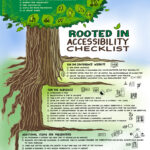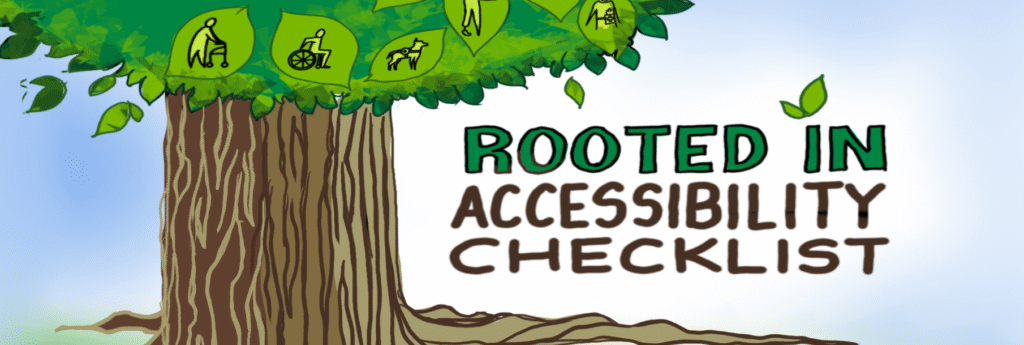Checklist Developed by: Oluwafemi Ajayi, Rebecca Esparza, Rae Martens, and Shyamsundar Muthuramalingan
Illustration by: Candace Ramjohn
Blog by: Rebecca Esparza and Dawn Richards

Contexte
Accessibility should be an important part of engaging patient partners in any research project or initiative, and especially in a conference designed by and for patient partners. At PxP, the concept of accessibility has been critical since the start of the planning discussions by the PxP Steering Committee members for both PxP 2023 and 2024. It is also a key part of planning for the 2025 PxP conference.
At PxP, accessibility is focused on the fact the conference is free for anyone to attend. PxP is held virtually so people can attend from anywhere in the world. Most PxP sessions are recorded, allowing participants to watch them at times that fit their schedules. Closed captions are also provided in multiple languages, among other accessibility features. Attendees have shared that these thoughtful considerations make it easier for them to engage with the event in ways that work best for them—whether they’re able to join live or need to participate on their own time.
Last year’s PxP 2024 Steering Committee discussed helping other organizations to build virtual conferences that are equally accessible to their audiences. The idea for an ‘accessibility checklist’ was created at the 2024 Steering Committee meetings. While the checklist was designed by and for patients for virtual conferences, the checklist can be used for anyone organizing and hosting a virtual conference.
Here we share how the work to develop the accessibility checklist for virtual conferences was developed collaboratively, along with the checklist itself. We hope that sharing both our collaborative process and the resulting checklist will support and inspire others in their own work.
Our Work Together
After PxP 2024, a working group was convened to co-create an accessibility checklist. All members of the 2024 PxP Steering Committee who had an interest in joining the working group were invited to join.
The working group met to discuss the accessibility checklist, along with a visual alchemist who captured the meeting graphically. The graphical recording of the meeting included a summary of the discussion, as well as thoughts about how the checklist could look. One of the main ideas was presenting the checklist as a visual, instead of as a typical checklist.
Shortly after the meeting, a few options for the graphical representation of the checklist were shared with the working group. Ideas and insights about these options were provided to the visual alchemist. There were two more iterations of the graphical checklist with feedback from the working group. The final accessibility checklist for virtual conferences is depicted as a tree ‘rooted’ in accessibility, which you can download below.
The Checklist
The checklist starts with a definition of accessibility for virtual conferences, which the working group defined as: “removing or minimizing barriers so that everyone has equal opportunity to see or hear the information presented.” Items in the canopy of the tree are related to this overarching definition of accessibility for virtual conferences. These include considerations such as creating a safe space, having barrier free engagement, participating for free, registering in a simple way, and hosting a conference that is without ableist biases.
As we move down to the roots of the tree, three key areas of accessibility emerge for conference organizers to focus on: the conference website, the audience, and additional considerations for presenters. These areas were identified as the most important, each encompassing a range of specific items to guide organizers in planning a truly accessible virtual conference.
Using The Checklist
The working group invites anyone who is organizing and hosting a virtual conference to utilize the accessibility checklist, regardless of the topic or audience.
By prioritizing accessibility, we ensure that every voice has a seat at the virtual table, fostering richer dialogue and greater global equity. Our committee is proud to contribute to the growing body of knowledge on accessible virtual conferences, with the hope of setting a more diverse and inclusive standard for events everywhere around the world.

